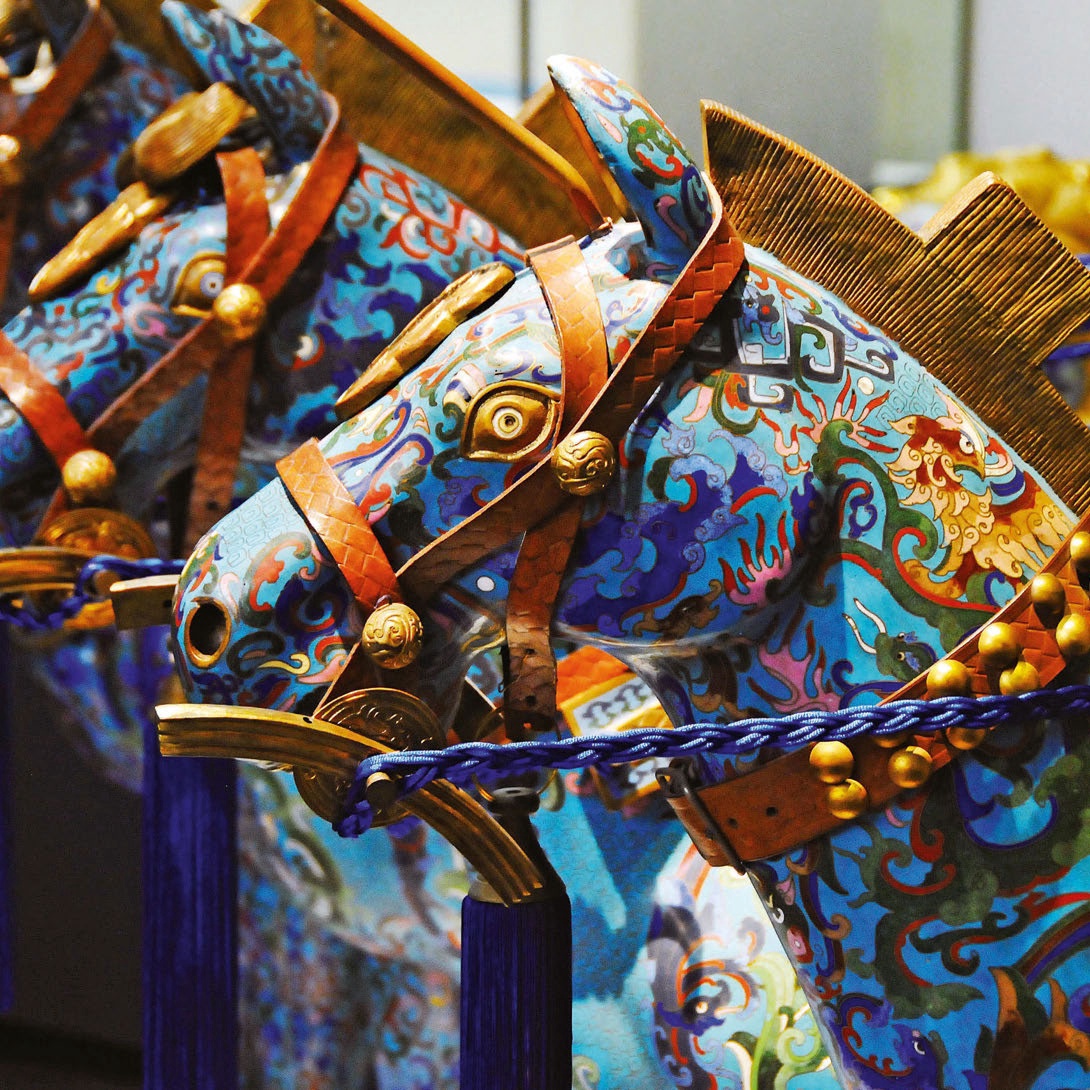
The moment you step into the museum, your eyes will be caught by a huge stout jar for its gorgeous brilliant colours. Against the sky dyed in sapphire and peacock blue, a golden Chinese dragon is roaring, with its scales shimmering and its body surrounded by a dark red colour as if it’s spitting fire. The dragon’s feelers and tail are tinted in black ink and the clouds sketched in bright yellow are filled with blue and red colours. Although very colourful, the jar is also stately. The rim bears two marks of identification which read “Made in the reign of Emperor Xuande of the Ming Dynasty” and “For Royal Use”. Without doubt, what you are looking at is a piece of the Chinese cloisonné. Chinese cloisonné is a kind of enamelware, or rather, copperware model decorated with filigree and enamel. It originated in the Near East in ancient times and its craftsmanship reached its apex in the Byzantine Empire. In modern times, Western interest in the cloisonné was rekindled in 1904 at the St. Louis World’s Fair, where works of Chinese cloisonné won first prize. At the Panama–Pacific International Exposition held in San Francisco in 1915, the Chinese cloisonné defended its honour, making it well-known around the world.
How did cloisonné enter China and how did its craftsmanship in Beijing become unrivalled in the world? The Palace Museum in Beijing has the world’s largest collection of cloisonné. Physical evidence indicates that cloisonné began to be appreciated by the emperors of the Yuan Dynasty (1271-1368). With the imperial court of successive dynasties devoting massive human and material resources to making exquisite cloisonné, it flourished in the court for over 600 years. For a long time, cloisonné was a symbol of the imperial family. Today, when you visit the Palace Museum, you will be able to see elegantly designed, beautifully coloured and exquisitely crafted works of Chinese cloisonné in almost every hall. However, the name /jĭngtàilán/ ‘jingtai blue’ did not appear until the reign of Emperor Yongzheng (1723-1735) of the Qing Dynasty, when it became fashionable to copy the cloisonné of the景泰/jĭngtài/ period in the Ming Dynasty and inscribe the characters 景泰 on it. Since the most common colour of enamel glaze was peacock blue, and the Chinese character 蓝/lán/ ‘blue’ is similar in pronunciation to the character 琅/láng/ of 珐琅/făláng/ ‘enamel’, the name 景泰蓝 came into being.



